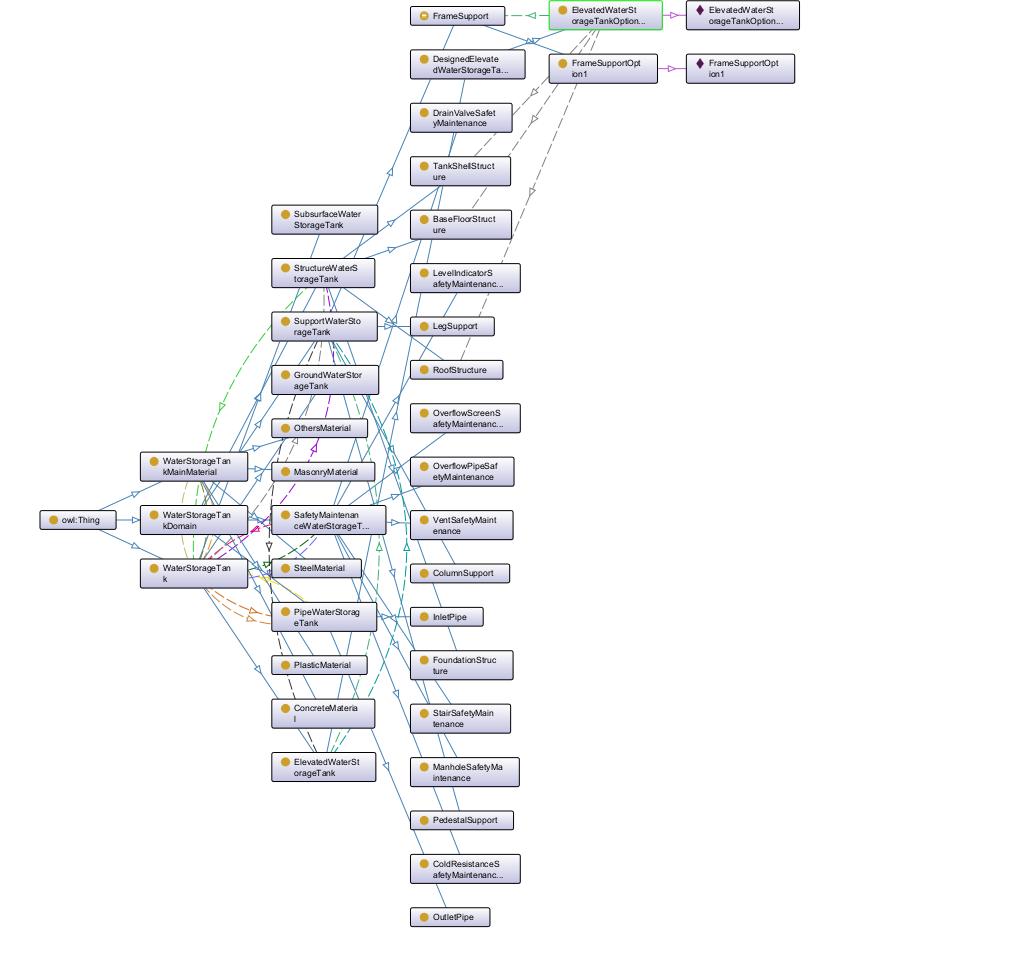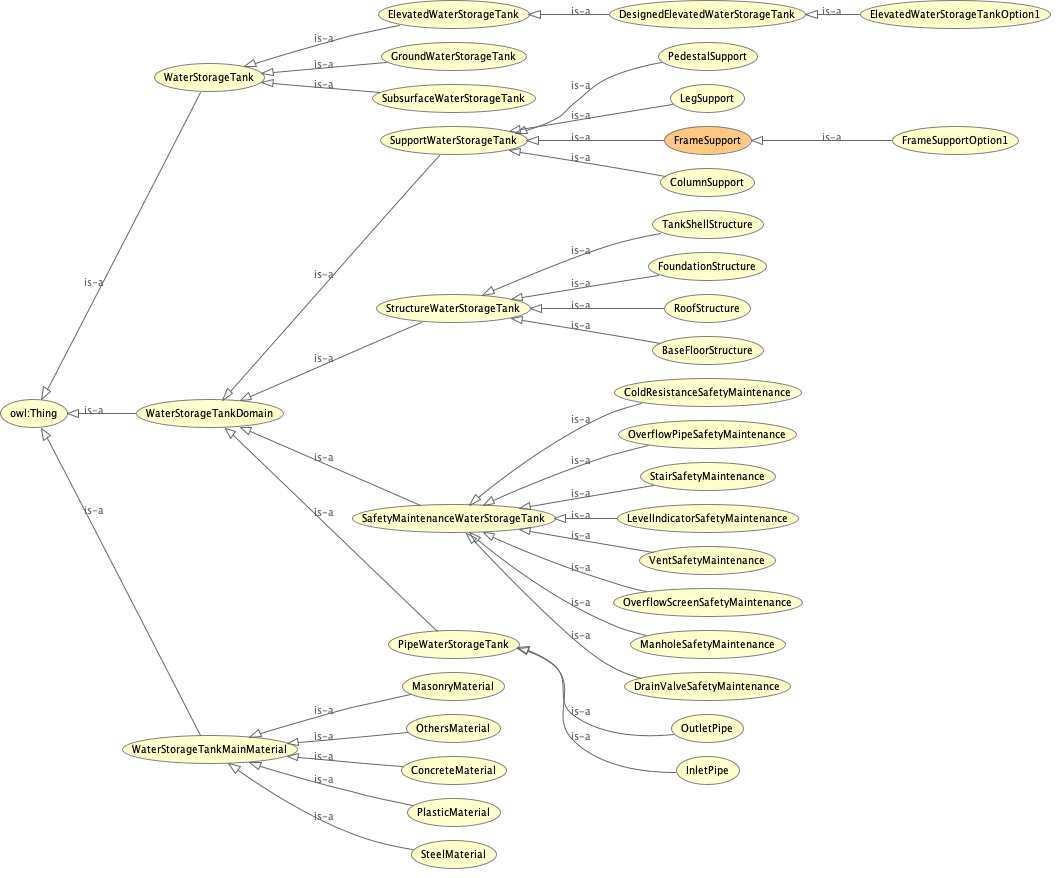Ontology
Purpose:
To encapsulate essential concepts crucial for the conceptual design phase of water storage tanks, specifically emphasizing structural analysis of frame supported tanks.
Scope:
It includes various concepts such as the physical components of water storage tanks, material possibilities, tank types, and their interrelations, and it presents an exemplar individual representing a frame-supported elevated water storage tank, including its needed properties for analyzing the loads that will be generated from it and supported by the frame.
Intended Users:
Designers and engineers of the design process of elevated water storage tanks.
Intended Use:
Guiding designers and engineers in understanding the critical parameters for structural design of the elevated water storage tanks.
Class Hierarchy:
Figure 1: Class hierarchy of the elevated water storage tank ontology.
OWLWiz and OntoGraf:
Figure 2: OWLWiz graph of the elevated water storage tank ontology.

Figure 3: OntoGraf graph of the elevated water storage tank ontology.
Parametric Model
Purpose:
To support structural analysis and seismic design process of the elevated water storage tanks.
Parameters:
- Cylindrical shape
- Steel as the main material (it can be set to different material on the model)
- Height of the tank (Ht)
- Radius of the tank (r)
- Water filling height (Hw) (first design considers tank is 100% filled with water, however it is possible to design with different percentages on the model)
- Ratio of height of the water (Hw) to the radius of the tank (r): 0.7 < Hw/r < 2 (this ratio influences seismic loads due to the tank (with the exact location properties of the tank) and defined range is the optimal for the seismic loads)
- Hw/ Ht (percentage of water filling)
- Thickness of the tank shell (tt) (assumed 0.02m, can be set different)
- Thickness of the base floor (tb) (assumed plate and 0.03m, can be set different)
- Thickness of the roof (tr) (assumed plate and 0.01m, can be set different)
High Performance Criteria:
- Structural Integrity: The optimum capacity and weight for dead and seismic loads for safety.
- Use of Materials: The optimum amount of materials and uniformity for reducing complexity and costs (cylindrical shape and steel as the material are selected).
Model:

